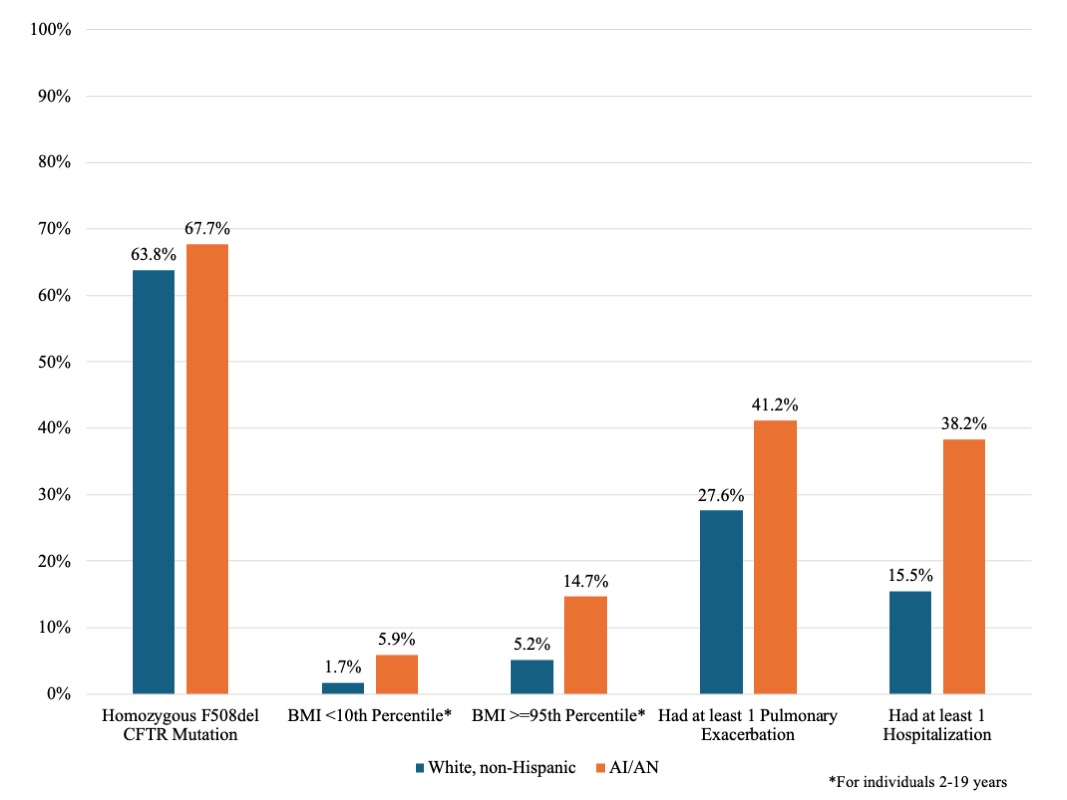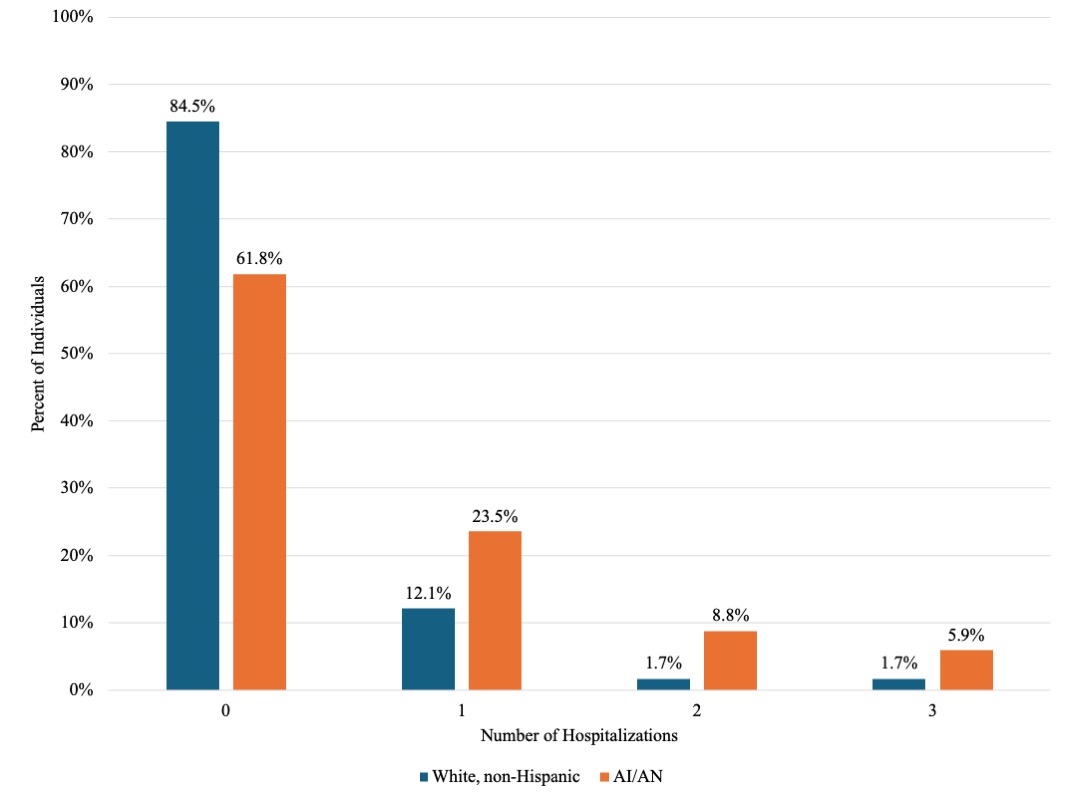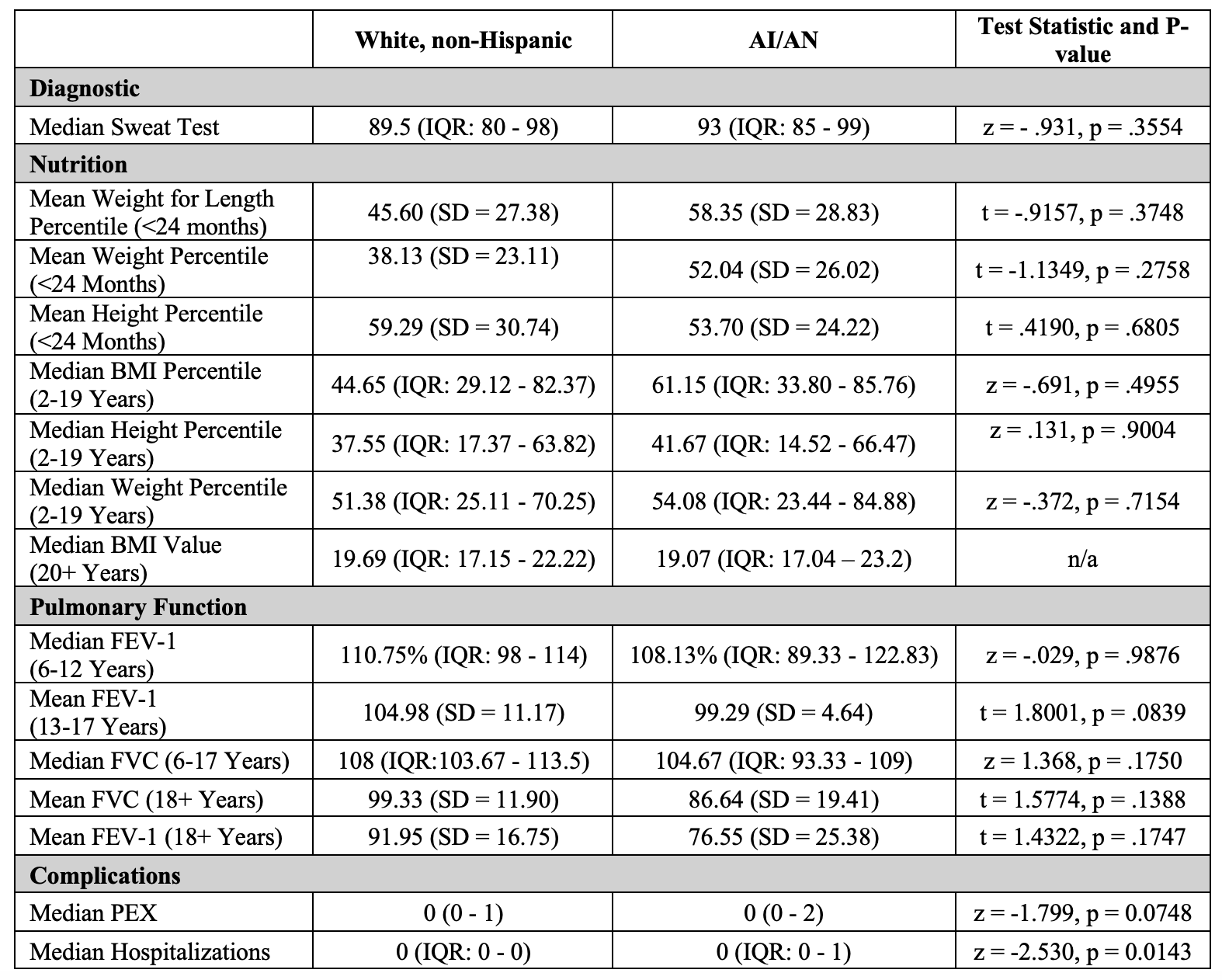Pulmonology
Session: Pulmonology
096 - Uncovering Health Disparities: Cystic Fibrosis Health Outcomes of American Indian/Alaska Native Individuals Receiving Care in Northeastern Oklahoma
Friday, April 25, 2025
5:30pm - 7:45pm HST
Publication Number: 96.6694
Amy D. Hendrix-Dicken, OU-TU School of Community Medicine, Tulsa, OK, United States; Emily Christein, University of Oklahoma College of Medicine, Sand Springs, OK, United States; Lily C. Robistow, University of Oklahoma School of Community Medicine, Owasso, OK, United States; Jillian Landers, University of Oklahoma College of Medicine, Tulsa, OK, United States; Monica B. Huerta, University of Oklahoma College of Medicine, Oklahoma City, OK, United States; Michelle Condren, University of Oklahoma School of Community Medicine, Tulsa, OK, United States

Amy D. Hendrix-Dicken, PhD (she/her/hers)
Senior Staff Research Assistant
OU-TU School of Community Medicine
Tulsa, Oklahoma, United States
Presenting Author(s)
Background: Despite growth in the American Indian/Alaskan Native (AI/AN) population and improvements in cystic fibrosis (CF) treatment, this population remains underrepresented in research.
Objective: Our objective was to compare the health status of the AI/AN CF population in northeastern Oklahoma to that of their White, non-Hispanic peers.
Design/Methods: This retrospective study utilized the CF Registry data of White, non-Hispanic and AI/AN individuals (0-21) seen at the Tulsa CF Center in 2023. Data included demographics, health status, and healthcare utilization. Individuals who were AI/AN, regardless of other races/ethnicities were classified as AI/AN for the purpose of analysis. The best quarterly anthropometric and lung function measurements were utilized to determine individual annual averages. A pulmonary exacerbation (PEX) was counted if it was >30 days from a preceding PEX. Descriptive statistics were conducted. Normality was assessed and Mann-Whitney U, and Welch’s t-test were performed with a significance value of .05.
Results: Of the 92 individuals assessed 63.0% (n=58) were White, non-Hispanic. The remaining 37.0% (n=34) of individuals were “AI/AN” with the majority being ‘AI/AN with another race/ethnicity’ (n=30, 88.2%). Both groups were predominantly homozygous F508del (Figure 1). None of the anthropometric and lung function variables of interest were statistically significant (Table 1). The AI/AN group had a higher percentage of individuals (n=2, 5.9%) with BMI percentiles < 10th percentile compared to the White, non-Hispanic group (n=1, 1.7%; Figure 2). The AI/AN group also had a greater percentage of individuals with BMI percentiles >95th percentile (n=5, 14.7%) compared to the White, non-Hispanic group (n=3, 5.2%). While the median number of PEX was not statistically different between the groups, 41.2% (n=14) of AI/AN individuals had >1 PEX compared to 27.6% (n=16) of White, non-Hispanic individuals. There was a statistically significant difference in hospitalizations between the White, non-Hispanic (Median=0, Interquartile Range (IQR): 0-0) and AI/AN groups (Median=0, IQR: 0-1; z= -2.530, p= 0.0143, Figure 2). Further, 38.2% AI/AN individuals had >1 hospitalization compared to 15.5% of White, non-Hispanic individuals.
Conclusion(s): These findings suggest that AI/AN individuals with CF may experience more hospitalizations than expected. A greater percentage of AI/AN individuals experienced a PEX compared to their White, non-Hispanic peers. Further investigation of potential disparities in this population will help determine reasons for higher-than-expected healthcare utilization.
Figure 1. Comparison of mutations, complications, and comorbidities

Figure 2. Percent of Individuals with Hospitalizations by Ethnoracial Group

Table 1. Comparative health measures of interest between the two ethnoracial groups*
 *For normally distributed data, means, standard deviations and t-statistics from the Welch’s t-test are reported. For non-normally distributed data, medians, interquartile ranges, and z-statistics from the Mann-Whitney U test are reported.
*For normally distributed data, means, standard deviations and t-statistics from the Welch’s t-test are reported. For non-normally distributed data, medians, interquartile ranges, and z-statistics from the Mann-Whitney U test are reported.SD: Standard Deviations
IQR: Interquartile Range

